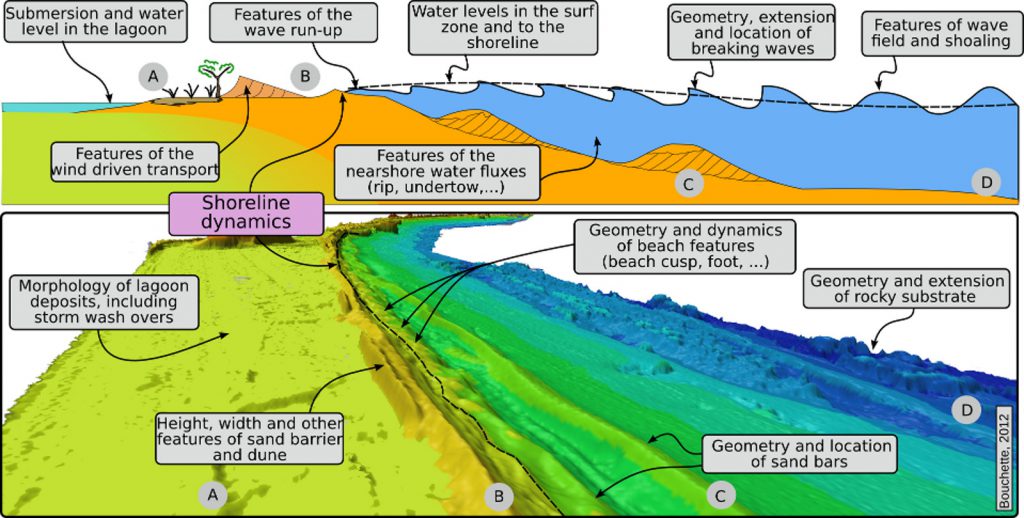My scientific activity concerns the development of concepts and methods in relation with the dynamics of shallow water environments. I study the domain that extends from a few tens of meters of water depth at sea to the coastal watershed onshore, with a particular emphasis on the littoral area and the shoreline itself. In the littoral system, I focuss on the understanding of hydro-morphodynamic processes at different time and space scales. Sometimes, I use these concepts to improve our knowledge of the dynamics of ancient geological systems. I also make a significant effort to transfer this knowledge to engineering. But my preferred activity is to move borders in between geosciences, physics and applied mathematics.
In the sections below, I tentatively provide brief descriptions of some of my works, combining results from existing papers and on-going works. Well, this is a theoretical will.
